For more than twenty years, researchers at Aaniiih Nakoda College and the Fort Belknap Reservation’s Environmental Protection Department have worked to document the harm done by an abandoned gold mine adjacent to the reservation. Their findings are now helping block efforts to restart exploration within the mine site.
By Paul Boyer
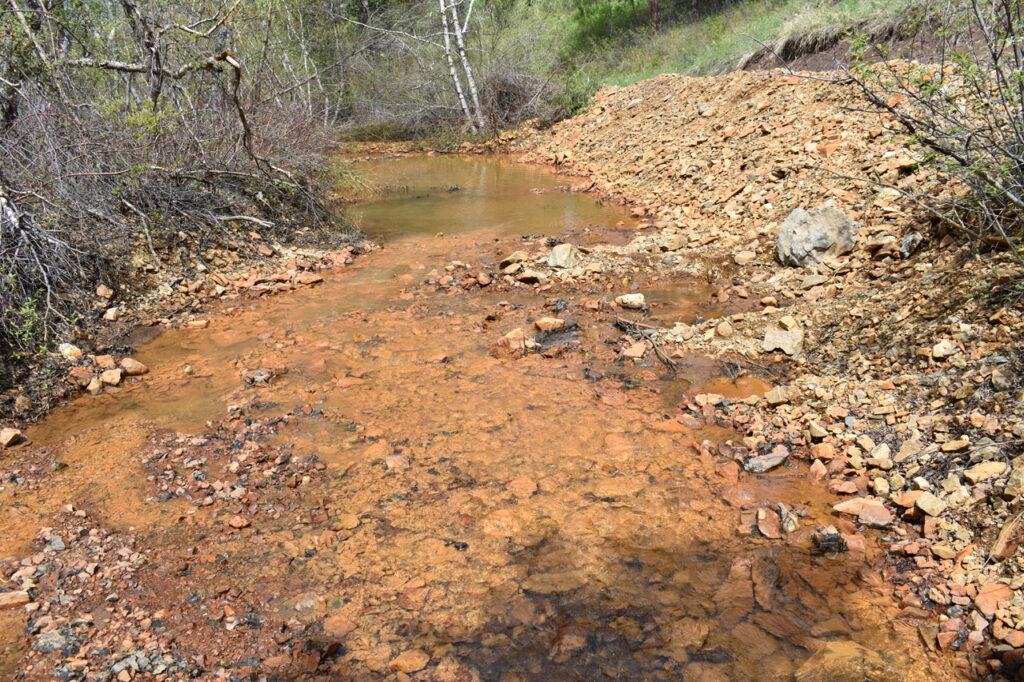
For decades, a massive open pit gold mine on the southern border of the Fort Belknap Reservation of Montana methodically transformed a forested mountain landscape sacred to the Aaniiih and Nakoda people into a moonscape of craters and crushed rock. Highly acidic water, tainted by cyanide used to extract particles of gold and silver from ore, flowed down the mountains and onto reservation land, turning streams red and killing aquatic life.
The Zortman and Landusky Mines closed in 1997 when the value of gold dropped and Pegasus Gold Corp, its parent company, went bankrupt, but the damage remains and may be irreparable. Declared a federal Superfund site, millions of dollars are spent every year by the state of Montana to treat polluted water draining out of abandoned pits and leach fields. Experts say this work will continue “in perpetuity,” meaning, for all practical purposes, forever.
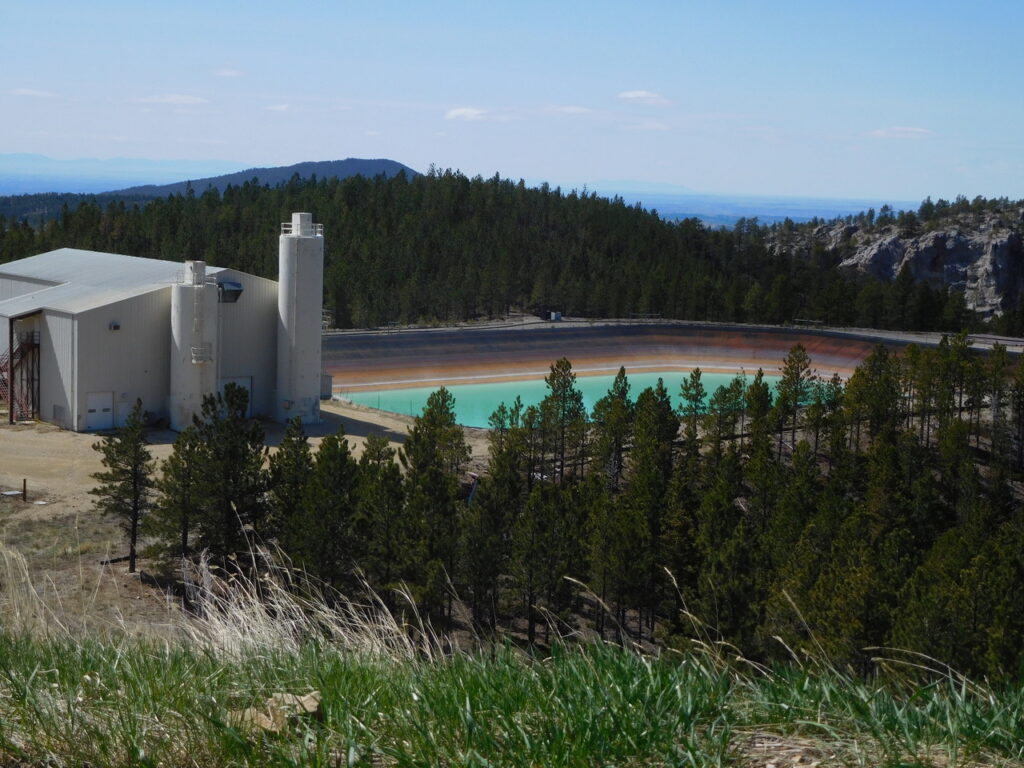
But the urge to squeeze profit from the land, despite its grim history and lasting harm, also remains. An effort is now underway to restart exploration and potentially renew mining on privately owned land within the mine’s boundaries and a short distance from the tanks, pipes, containment ponds and water treatment plant working around the clock to mitigate the damage already done.
This incongruous turn of events was triggered by a seemingly small bureaucratic oversight when, in 2020, a five-year federal moratorium on issuing mining claims expired 48 hours before a new moratorium, also known as a “mineral withdrawal,” was issued. During this two-day gap, according to a 2021 complaint filed by the Fort Belknap Indian Community and several conservation groups, ten claims were filed in the Zortman Landusky Reclamation Area by Blue Arc LLC, a mining exploration company owned by Luke Ployhar, who purchased mine claims totaling over 1,000 acres after Pegasus declared bankruptcy.
At first, it looked like Montana’s Department of Environmental Quality would give the green light to Blue Arc’s proposal to dig an exploratory trench in anticipation of renewed mining. That’s what many community members expected. Between 1979 and the mid 1990s, state and federal regulators approved eleven requests to expand mining operations with only minimal environmental review. These expansions happened despite strong opposition from the Fort Belknap Community.
But then something unexpected happened: In the wake of a public meeting held on January 4, 2022, the DEQ announced that it would require additional analysis of Blue Arc’s request, citing strong community opposition and what it called “conflicting evidence from credible and potentially expert sources.”
“This evidence raises substantial questions regarding whether significant impacts could occur to historical, archeological, social and cultural resources as a result of the proposed actions,” according to a DEQ statement. “Based on the current information before us, DEQ cannot say with certainty that potentially significant impacts do not exist.”
To say that the tribe and other mine opponents were surprised by this favorable ruling is putting it mildly. As a story in the Havre Daily News put it, “this decision came as a shock to many on Fort Belknap”—not simply because the project was at least temporarily blocked, but because tribal members were heard, and their arguments carried weight. Perhaps for the first time, they were called a “credible” and “potentially expert” source of information by an agency that many tribal activists had long viewed as their adversary.
Of course, the battle is not yet won, but this particular victory is evidence, some say, of the tribes’ growing capacity to fight back. Initially, the Fort Belknap Community, constrained by limited resources, relied on the work of local environmental groups, recalled tribal Environmental Manager Ina Nez Perce. “They were fighting the fight,” she said, but it was a lopsided battle against what was, for a time, the world’s largest cyanide heap leach mine.
In the early 1990s, however, the work of citizen-activists was strengthened by leadership from the tribal government, Nez Perce said. The tribes’ environmental protection office now has more staff and resources to monitor water quality and habitat conditions, and elected officials are also vocal advocates for the reservation’s water quality and water rights.
But essential to this activism and political leadership is the growing research capacity of Aaniiih Nakoda College, the local tribal college, which has been gathering data on water quality for over twenty years and recently established, with $3.5 million in funding from the National Science Foundation, the interdisciplinary Nicʔ-Mní (Water) Center to expand its research and share findings through an annual forum. Data collected by STEM faculty and Nicʔ-Mní staff provide compelling evidence of ongoing environmental damage to waterways, groundwater and ecological systems.
In a statement provided to the Daily Montanan following the DEQ ruling, Luke Ployhar, owner of Blue Arc, appeared to argue that the Zortman and Landusky Mines had not impacted tribal watershed, asserting, “Any and all claims by the Tribes of bad water extending onto their lands is a blatant falsehood. The water treatment facilities put in place by Pegasus Mining are able to capture and contain and process any historical elevated acidic waters.”
In fact, data collected by the college paints a very different story. Examining water from streams flowing out of the mine’s land and onto the reservation, tribal and college scientists have filled boxes with evidence documenting significant damage to several key waterways.
A paper coauthored by college scientists and students in the natural resources program, recently published in the White Clay and Nakoda Circle Speaker Environmental Newsletter, summarized findings from a years-long aquatic study managed by the college’s EPA-funded Water Laboratory, a research program that predates the new Water Center. Purposefully following EPA procedures and protocols so that findings could be presented in court, the study found significant damage to key waterways, even years after mining ended.
King Creek, which has its headwaters in the mine, “remains a severely impacted drainage,” according to the paper. Another stream, Swift Gulch, “has been totally disrupted by mining activity and reclamation efforts.”
“With extensive field and laboratory studies we found that the contamination from the mine, as it continues toward the reservation, is rapidly moving downstream with rain or storm events,” the paper reported, turning the water in some creeks bright red. Tailings and sediment collected along the drainages of these and other creeks found “heavy metal contamination with some exceeding health levels allowed in surface water.”
“We have the water quality data to back up that water coming onto the reservation is impacted,” said Mitchell Healy, the tribes’ water quality coordinator, who holds an associate degree in natural resources from Aaniiih Nakoda College and a master’s degree in environmental management from the University of Maryland University College. “It’s from the mines. It’s obvious. There are no ifs, ands or buts about it.”
Additionally, data collected by Aaniiih Nakoda College faculty member Dan Kinsey and natural resource students also document the impact of polluted water on invertebrate life. Using fine-mesh kick nets to collect larvae and insects from several streams, he and the students report that most impacted streams are nearly lifeless.
“All of those drainages are polluted,” said retired faculty member Liz McClain, summarizing findings from the accumulating data at the January 4 public meeting. “And the water is so polluted nothing will live in it.”
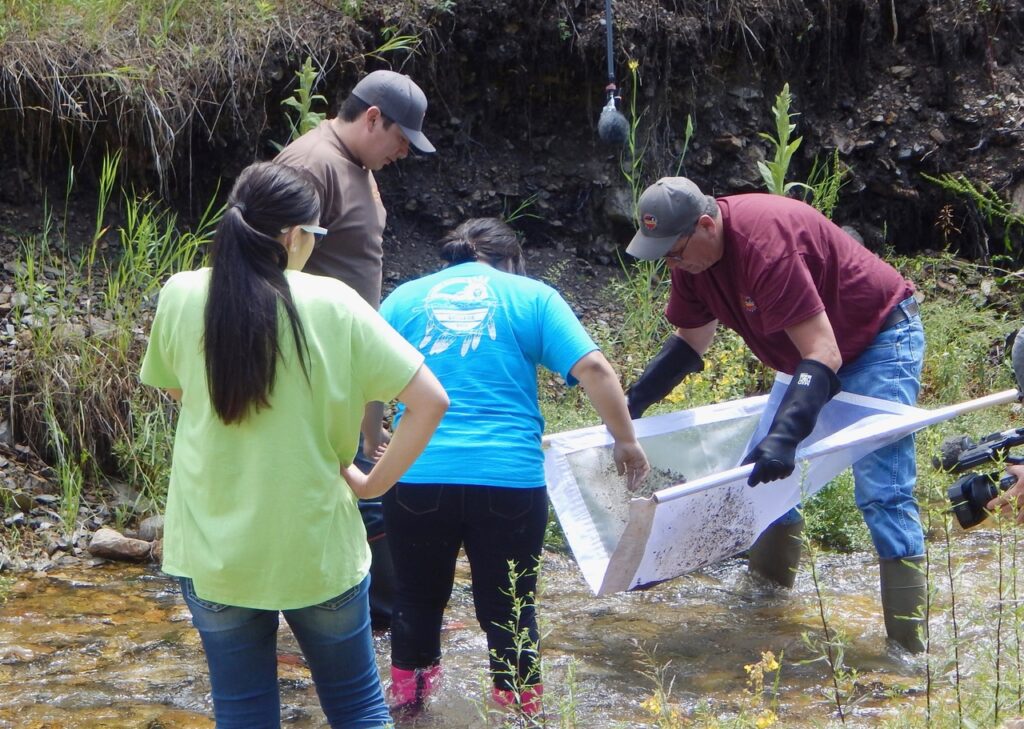
Researchers also investigated the mine’s impact on the larger ecosystem, including land that has been “reclaimed.” Before mining, the mountainous region was forested and supported a rich variety of animal and plant life, with equally complex microbial life in the topsoil. Mining stripped away the soil, leaving deep cavities and acres of bare ground and crushed rock.
Much of this remains, but some parts have been covered with dirt and planted with grass, reflecting a longstanding approach to land reclamation that focuses more on covering an eyesore than on restoring a habitat. While this work softened the edges of excavated cavities, research conducted between 2002 and 2006 by Water Lab personnel, supported by funding from the USDA Tribal Colleges Research Grants Program and carried out in partnership with restoration ecologists at the University of Wyoming, found that soil in these reclaimed regions cannot break down organic matter as efficiently as soil in undisturbed parts of the surrounding mountains.
Analysis of two test sites found that soil contained “minimal levels of organic matter needed to support microbial activity as well as sustain plant growth and nutrient recycling,” compared with undisturbed test sites, according to a paper published in Circle Speaker. College scientists caution that it is important to continue monitoring the soil to better understand the process of regeneration, but their work provides more evidence that the mine’s harm is systemic, long term, and may require many years—possibly generations—to restore what was lost.
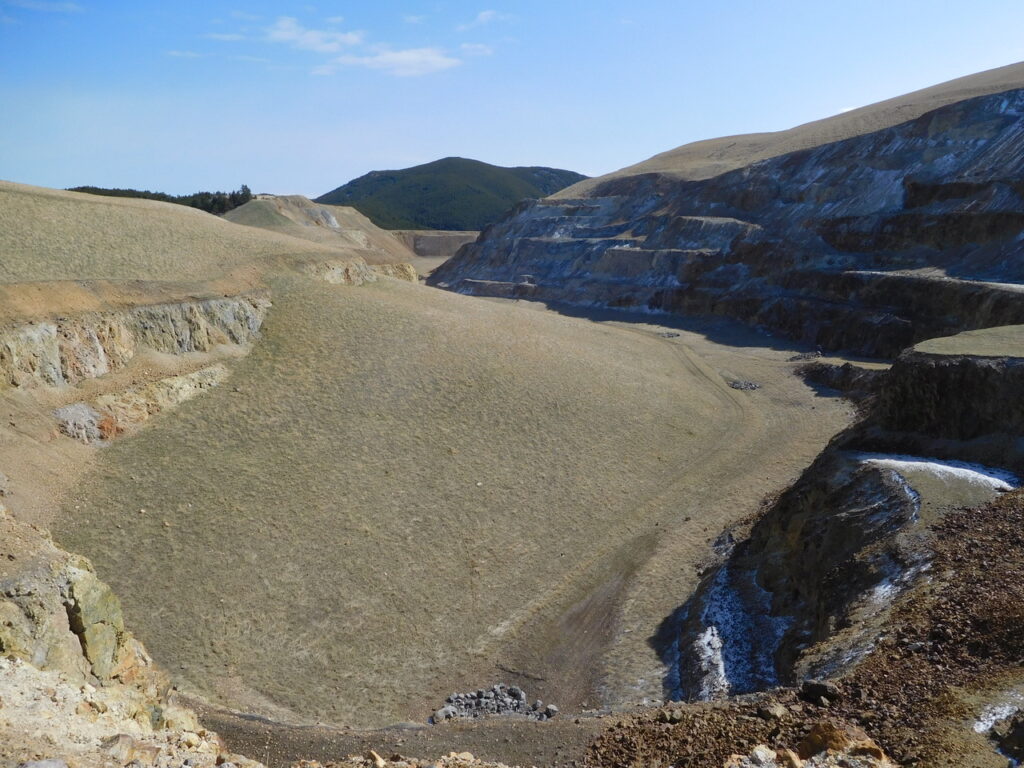
This evidence, combined with a history of mistrust toward state and federal officials, is shaping the response to the proposed exploration. State DEQ officials, speaking at the January 4 public meeting, argued that Luke Ployhar was only requesting approval for a relatively small exploratory trench. Tribal leaders and state environmental organizations who spoke at the meeting rejected this reassurance.
To insist that the proposal is only about a trench the size of a city bus and will have no environmental impacts “only serves the purpose of ignoring reality,” said Derf Johnson, a staff attorney with the Montana Environmental Information Center. “Mining exploration leads to mining. It’s the first step in what could be a whole range of activities and impacts.”
Multiple speakers also emphasized what they characterized as the DEQ’s track record of minimizing potential risk, inadequately investigating the damage done and failing to seek input from the tribe.
“Fort Belknap opposes this new mining permit that you guys are looking at for Luke Ployhar, based on the fact that, first of all, you guys didn’t consult the Tribes,” asserted Fort Belknap Community Tribal President Jeff Stiffarm. The only time that you did consult the Tribes was when we filed a lawsuit against you guys for not following your laws.”
Stiffarm also pressed the DEQ officials to explain how Ployhar was able to complete and submit all of the paperwork required for approval of excavation during the brief 48-hour gap in the moratorium. “Maybe it was you guys that notified Mr. Ployhar about this two-day window,” Stiffarm said. “There’s a lot of unanswered questions that you guys are not answering for us.”
At a deeper level, opposition to mining is guided by the spiritual significance of the Little Rocky Mountains, which are known, respectively, as Biiθ otoʔ (Fur Cap) and Jyahe widá (Island) Mountains by the Aaniiih and Nakoda nations.
“These mountains are our churches,” Stiffarm said. “That’s how sacred they are to us.”
In his statement made following the DEQ’s decision, Luke Ployhar charged that the Fort Belknap Community opposes his bid only because the tribes want to profit from the land. “Make no mistake, the tribes are interested in this area due to its significant economic possibilities and not cultural heritage.”
It’s a claim strenuously rejected by tribal members fighting renewed mining.
“Mr. Ployhar is mistaken, President Stiffarm said. “The Aaniiih and Nakoda people have zero interest in any more gold mining on or near our reservation… For years, we bathed in and ingested the chemical remnants of more than a century of gold mining. We are now continuously fighting to clean up and restore the safety of the waters flowing to our permanent homeland.”
The land where the mine now sits was originally part of the reservation, but sold to the federal government when prospectors discovered gold in the late 19th century. The acreage removed from tribal lands, known as the Grinnell Notch, is named after George Bird Grinnell, the federal government’s negotiator, who, many tribal members say, coerced tribal leaders into relinquishing the land.
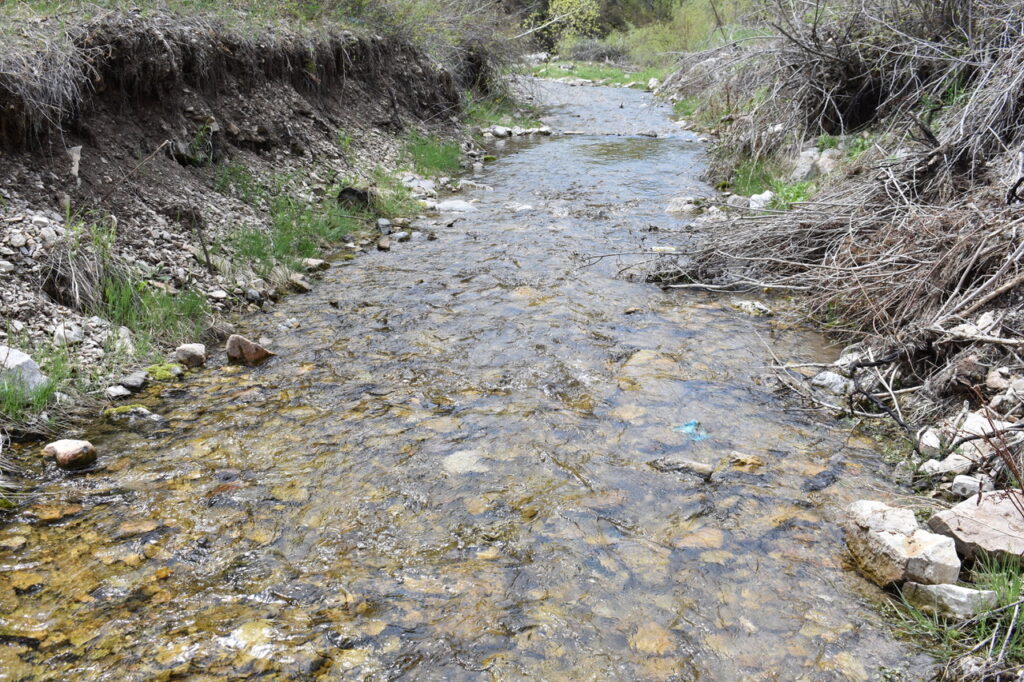
Fort Belknap Community Environmental Manager Ina Nez Perce said it is her hope—one shared by many—that the land will be returned to the tribes and that, to the greatest extent possible, the damaged landscape will be restored and returned to its traditional cultural and spiritual uses.
The land is usable, she agreed–but not for mining. “That’s out of the question.”
For decades, the tribes had only limited ability to fight mining companies and their allies in government. The finding from the state DEQ, which acknowledges credible opposition to the planned exploration, suggests that a new era of empowerment is emerging, led by the continuing work of community activists, tribal leadership, and the growing research capacity of both Aaniiih Nakoda College and the tribal environmental protection office.
Even if mining companies and state officials don’t understand the cultural significance, said retired science faculty member Liz McClain, “science can beat them.”
Paul Boyer is editor of Native Science Report.
Story published May 31, 2022
• • •
Enjoyed this story? Enter your email to receive notifications.
